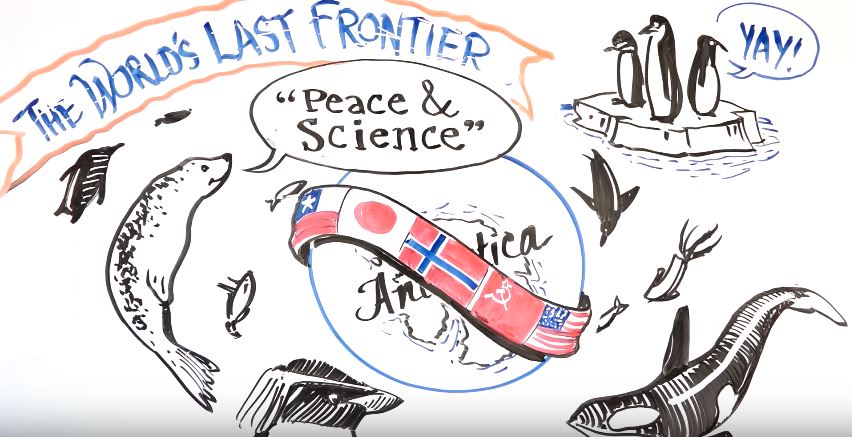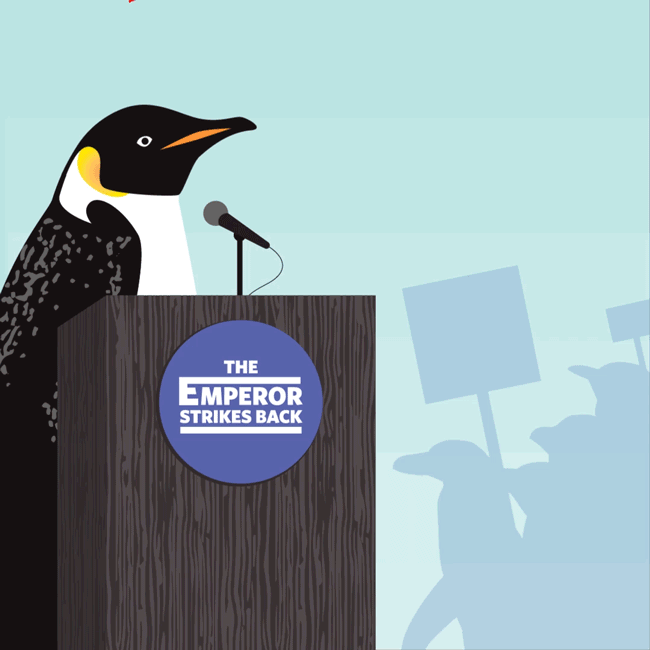Winner in 2016 Penguin Election Calls for Antarctic Marine Reserves
CCAMLR must create Southern Ocean sanctuaries to counter threats to numerous species
In a frenzied race that remained too close to call until its final hours, the emperor squeaked out a victory as this year’s most popular penguin species! Facing stiff competition and relentless campaigning from six other types of penguins, the emperor prevailed with the popular vote. Because Antarctica and the Southern Ocean lack an electoral college, the race hinged on which of these flightless bird species could garner the most votes outright.
The animals faced off against one another to draw attention to the rising threats to Antarctica and its surrounding waters. All seven of the species that competed in the 2016 election—the others are the gentoo, macaroni, chinstrap, yellow-eyed, Adélie, and king penguins—are calling for urgent action to protect their habitat and food supply.
The most effective way to do that is through the establishment of large-scale marine protected areas, particularly in the Ross Sea and East Antarctica. The Southern Ocean around Antarctica is one of the last great wilderness areas on Earth, including roughly 10 percent of the global ocean. The strong, upwelling currents of the seas around the frozen continent carry critical nutrients around the world.
A 2011 article in the journal Biological Conservation called the Ross Sea “the least altered marine ecosystem on Earth.” But that status faces a threat from commercial fishermen, who are increasingly drawn to this area of the Southern Ocean to hunt Antarctic toothfish, a top predator in the region’s food web. These fish, also known as Chilean sea bass, draw high prices in restaurants and markets, and overfishing the species could disrupt the ecological balance of the Ross Sea and beyond.
The waters of East Antarctica are remote even by Antarctic standards but warrant protection because this region provides critical habitat for a multitude of penguins, seals, krill, and other species.
Leading marine scientists say that a dramatic rise in the fishing of krill, a small shrimplike crustacean, is forcing many penguins to travel farther for food, disrupting their breeding and chick-rearing patterns and driving down their numbers. For all of the above reasons, the World Conservation Congress of the International Union for Conservation of Nature voted in September to urge creation of the reserves.
Establishing them, though, is up to the Commission for the Conservation of Antarctic Marine Living Resources (CCAMLR), a fisheries management body that sets fishing policy in the Southern Ocean. CCAMLR’s 25 member governments will consider proposals to create the protected areas at the commission’s annual meeting in Hobart, Tasmania, from Oct. 17-28.
CCAMLR operates by consensus, which means that one “no” vote can kill a proposal. In fact, in five previous commission meetings, bids to create marine protected areas did not pass due to one or two dissenting votes. The proposals to create the marine protected areas, if passed, would still leave millions of square miles of ocean open to continued fishing.
In her acceptance speech following the victory, the emperor penguin said, “I’m honored to have earned the adoration of the penguin-loving community. But this win will be for naught unless CCAMLR creates these marine protected areas to benefit all Antarctic penguin species. For what good is popularity without a safe place to live and enough food to support our population?”


America’s Overdose Crisis
Sign up for our five-email course explaining the overdose crisis in America, the state of treatment access, and ways to improve care
Sign up

This video is hosted by YouTube. In order to view it, you must consent to the use of “Marketing Cookies” by updating your preferences in the Cookie Settings link below. View on YouTube
This video is hosted by YouTube. In order to view it, you must consent to the use of “Marketing Cookies” by updating your preferences in the Cookie Settings link below. View on YouTube











